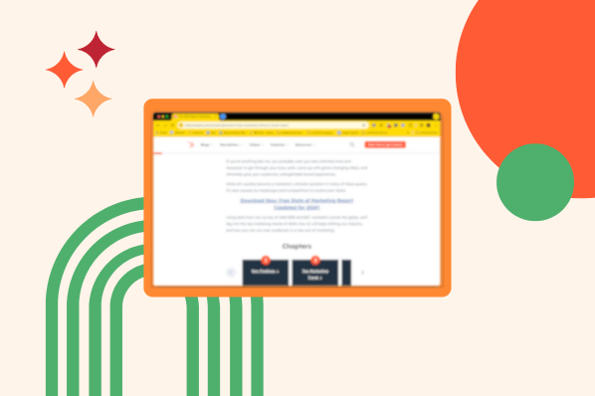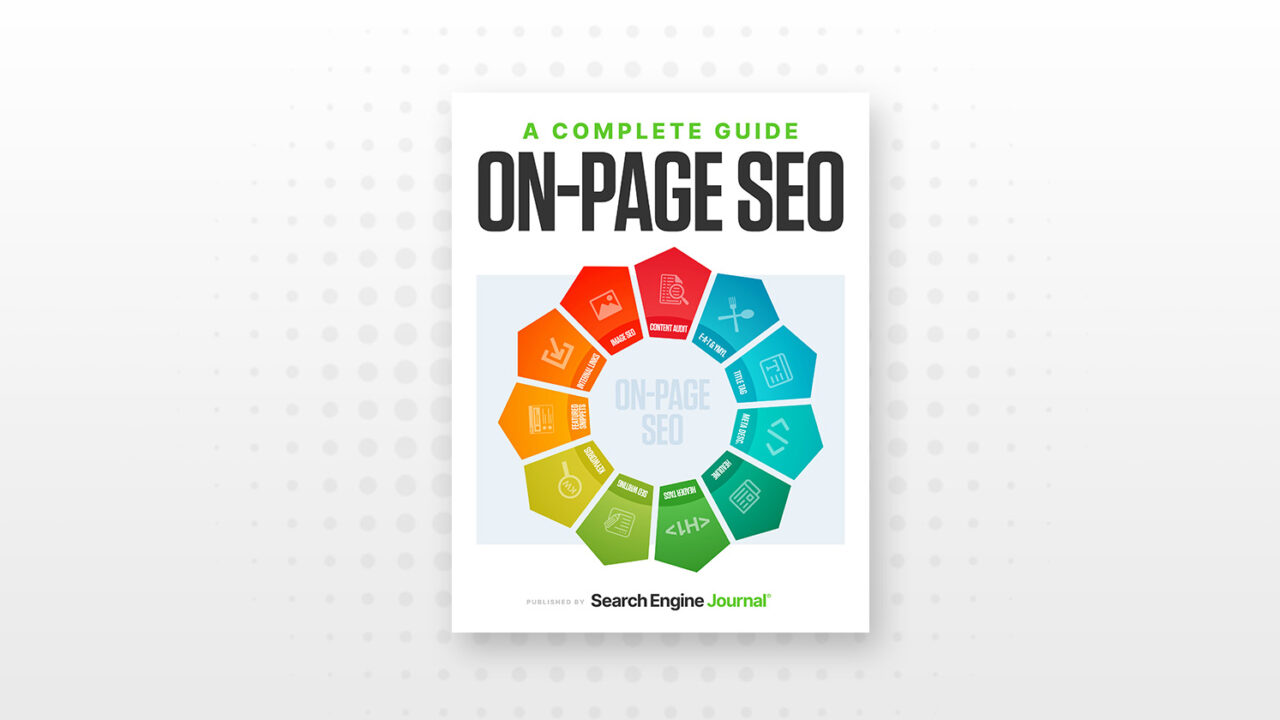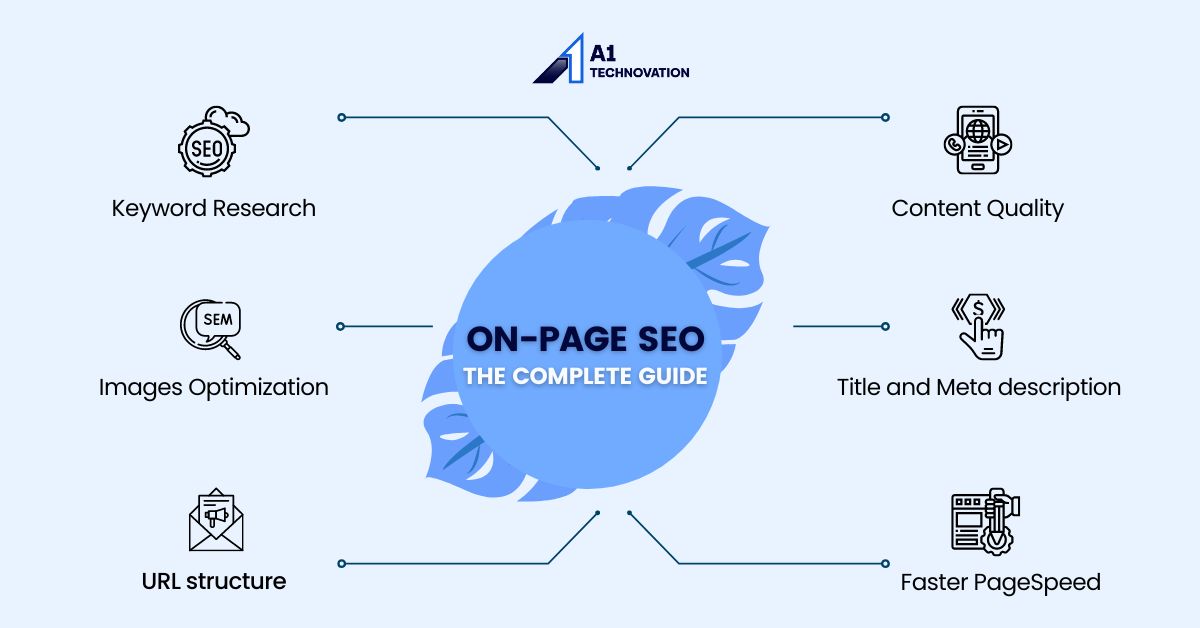On-Page SEO focuses on optimizing individual web pages for higher rankings. It encompasses content quality, keyword optimization, and HTML tags.
On-Page SEO remains a cornerstone of digital marketing strategies for 2024, pivoting around the incremental advancements in search engine algorithms. Understanding and adapting to these changes is crucial for anyone aspiring to elevate their website’s visibility in search engine results pages (SERPs).
As search engines like Google continue to refine their preference for user-centric content, webmasters and content creators must ensure that their on-page elements align seamlessly with these expectations. This includes the strategic use of relevant keywords, optimizing meta tags, headers, and images, as well as prioritizing high-quality, engaging content that addresses the intent of search queries. Reliable and swift navigation, page loading speeds, and mobile-friendliness also play significant roles in determining a page’s SERP position. By mastering these aspects of on-page SEO, businesses and individuals can craft a robust online presence that not only attracts audiences but also sustains organic growth.
Why On-page Seo Matters
Increased Organic Traffic
Organic traffic is the lifeline of your online presence. Well-executed on-page SEO drives visitors directly from SERPs. It’s about getting found by people looking for what you provide. Here’s why it matters:- Targeted keywords bring the right audience.
- Catchy meta titles and descriptions encourage clicks.
- High rankings mean more visibility and clicks.
Improved User Experience
A strong user experience binds visitors to your site. SEO practice does not end with getting traffic. It continues with keeping them interested. Here’s how on-page SEO elevates user experience:- Clear headings and organized content guide visitors.
- Fast loading pages prevent frustration.
- Mobile-friendly design keeps mobile users engaged.

Credit: blog.hubspot.com
Key On-page Seo Factors
Keyword Research
Keyword research is the foundation of SEO. Find terms that your audience searches for. Use tools to understand search volume and competition. Your aim is to find the perfect balance between high traffic and attainable rank.Content Optimization
Content is king, and content quality rules the kingdom. Make sure your content is comprehensive, valuable, and answers user queries. Use relevant keywords smartly to match search intent. An SEO content score tool can check optimization levels.Keyword Placement
Keyword placement is key. Include main keywords in titles, subheadings, and throughout your content. Balance is vital, avoid keyword stuffing. Use variations and long-tail keywords for better context.Images
Optimized images can boost your SEO. Compress files to improve load times. Use descriptive filenames and alt text. This helps search engines understand and rank images, offering an additional traffic source.Title
Your title makes the first impression. Keep it under 60 characters. Include the main keyword closer to the beginning. Ensure clarity and relevance to prompt users to click through.Headings
Well-structured headings guide users and search engines. Use H1 for your main title. Break content with H2, H3 for readability. Include keywords naturally to signal content hierarchy.Meta Description
A compelling meta description enhances click-through rates. Keep it under 160 characters. Write a concise summary of your content. Include a call to action and your main keyword.Url Structure
Your page’s URL should be succinct and keyword-rich. Use hyphens to separate words. Avoid long URLs. A clear structure helps users and search bots understand page relevance.Internal Linking
Effective internal linking spreads page authority and guides visitors. Link related content together. Use descriptive anchor text for links. This builds a network within your site, aiding navigation and engagement.Page Speed Optimization
Fast loading times are non-negotiable. Page speed optimization is a technical SEO staple. Compress images, leverage browser caching, and optimize code. Fast pages retain users and please search engines.Content Freshness
Keep your site alive with content freshness. Update old posts with current information. Add new articles regularly. Fresh content attracts both users and search engine crawlers.Keyword Research
Before Keyword Research, Ask Questions
Start by identifying who your audience is. Think about their needs, preferences, and the problems they’re trying to solve. These answers guide your research.What Terms Are People Searching For?
Know the exact phrases your audience uses. This ensures you meet their specific search intents.Discovering Keywords
Use tools to find relevant keywords. Include both NLP keywords and LSI keywords for semantic SEO.How Often Are Those Terms Searched?
Frequency matters. Opt for terms with a steady search volume to ensure visibility.Uncovering Search Volume
- Review data from multiple SEO tools.
- Analyze seasonal trends.
Understanding The Long Tail
Target long-tail keywords for less competition and higher conversion rates.Keywords By Competitor
Analyze competitors to understand the keywords they’re ranking for.Keywords By Season
- Identify when certain terms gain popularity.
- Plan content accordingly.
Keywords By Region
Local SEO can drive regional traffic. Focus on area-specific keywords.Tools For Determining The Value Of A Keyword
Select tools that provide insights into keyword difficulty and potential ROI.Optimizing Page Titles
What Is A Title Tag?
A title tag is an HTML element. It specifies the title of a web page. Search engines display title tags in search results as clickable headlines.Include Primary Keyword
Always include your primary keyword in the title tag. This tells search engines what the page is about.Maintain Length Limit
Keep title tags under 60 characters. This ensures they display properly in search results without being cut off.Write Unique Titles
Each page should have a unique title. This prevents confusion and helps search engines understand the uniqueness of each page.Benefits Of Title Tags For Seo
- Help users and search engines understand page content
- Influence click-through rates from search results
- Impact a page’s ability to rank for relevant searches
How To Optimize Your Title Tags For Seo
- Start with your primary keyword
- Add a compelling reason to click
- Use brand name if it adds value
Why Is Google Rewriting My Title Tags?
Google may rewrite title tags if they are too long, stuffed with keywords, or not relevant to page content.Tools To Help You Write Better Title Tags
- Google Search Console
- SEOmofo Snippet Optimizer
- Yoast SEO for WordPress
What’s The Difference Between A Title Tag And An H1 Tag?
A title tag shows up in search results. An H1 tag is the main heading on a page. Both are important for SEO, but serve different purposes.Creating Compelling Meta Descriptions
Summarize Content
A good meta description begins with a precise summary of your page’s content. This summary must be concise and informative, providing a snapshot of what’s in store for the reader. Think of it like the blurb of a book – it should offer enough detail to pique interest while leaving them wanting more.Utilize Primary Keywords
Your meta description should include your page’s primary keywords. Use them in a way that feels natural to the reader. SEO relies not just on keyword presence but on their relevance and context within the description. This makes your page more likely to pop up during specific searches.Entice Click-throughs
To turn searchers into visitors, your meta description should have a clear call-to-action (CTA). This can be a question that stokes curiosity or a tantalizing tease that offers a solution to their problem. Your goal is to make that searcher feel they will miss out if they don’t click on your link. Use active voice and make each word earn its place on your page. After crafting your meta description, ensure it aligns with users’ search intent for better click-through rates.Structuring Urls For Seo
Use Descriptive Keywords
URLs should include keywords that reflect the content of the page. This not only benefits users but also improves search engine understanding. Keywords in URLs should accurately describe the page’s subject.- Align URL keywords with page titles and content.
- Place important keywords near the start of the URL.
- Use only one or two keywords to maintain focus.
Keep It Short And Readable
Simplicity in URL structure facilitates ease of recall and readability. Short URLs enhance user experience and benefit SEO. Aim for a URL length that conveys content without being unwieldy.- Limit URLs to 60 characters or fewer.
- Avoid unnecessary words and filler.
- Ensure URLs are easy to remember.
Avoid Special Characters
Special characters in URLs can cause confusion for both search engines and users. Stick to plain text and hyphens to separate words. Clean URLs improve crawlability and accessibility.| Include | Avoid |
|---|---|
| Lowercase letters | Uppercase letters |
| Hyphens (-) | Underscores (_) |
| Numbers | Special characters (#, %, &) |
Optimizing Heading Tags And Content
Use H1 Tag For Page Title
The H1 tag is like a book’s title. It tells both search engines and readers what the page is about. Keep it clear, concise, and engaging. Make sure each page has one H1 tag that incorporates the main keyword.Implement H2-h6 Tags
Subheadings H2 to H6 break up content into smaller sections. They organize your topics and subtopics clearly. Search engines use them to grasp the detailed structure of your content. Use them hierarchically to outline your article’s flow.Ensure Keyword Placement
Place keywords strategically in your headings. The H1 should have the primary keyword. Secondary keywords belong in H2 and H3 tags. This highlights your content’s relevancy to search queries.Write High-quality And Relevant Content
Your content must be top-notch and relevant to the title. Use short sentences and bullet points for clarity. Always focus on providing value to your readers. Keep paragraphs short and full of information. Engage your audience with facts, examples, and solutions.
Credit: backlinko.com
Internal Linking Strategies
Linking To Relevant Pages
Relevance is key for effective internal linking. Link pages with similar topics to guide users and search engines.- Connect blog posts to related service pages.
- Use related articles to keep readers on-site longer.
- Link product pages to related accessories or guides.
Keyword-rich Anchor Text
Anchors tell readers and search engines what to expect. Choose descriptive, keyword-rich anchor texts. They enhance user experience and SEO.- Avoid vague anchors like “click here.”
- Use diverse yet relevant keyword phrases.
- Create natural and helpful links in content.
Building Site Hierarchy
A well-planned site hierarchy helps users and search engines. It leads to better crawling and indexing. Use internal linking to establish a clear path.- Start with broad topics at the top levels.
- Drill down to specific content at lower levels.
- Ensure that every page is a few clicks from home.
| Page Level | Internal Link Strategy |
|---|---|
| Top-Level (Home, Main Categories) | Link down to sub-categories and featured articles. |
| Middle-Level (Sub-categories, Article Series) | Interlink between related content across these pages. |
| Bottom-Level (Individual Articles, Products) | Link back up to relevant sub-category pages. |

Credit: www.searchenginejournal.com
Frequently Asked Questions Of On-page Seo: The Complete Guide For 2024
What Is On-page Seo?
On-page SEO involves optimizing web pages for specific keywords. It improves search engine rankings and user experience. Key elements include title tags, content quality, and URL structure.
How Does On-page Seo Impact Rankings?
On-page SEO directly affects rankings by signaling relevance to search engines. Properly optimized content with keywords, meta tags, and headings increases visibility. User experience factors also contribute.
What Are The Latest On-page Seo Techniques For 2024?
The latest on-page SEO techniques include optimizing for Core Web Vitals, using schema markup, and creating high-quality, intent-focused content. Ensuring mobile-friendliness and incorporating AI-generated content are also trending.
How To Optimize Meta Descriptions For Better Ctr?
Optimize meta descriptions by including target keywords and compelling call-to-actions. Keep them under 160 characters for better visibility in SERPs. Ensure they accurately summarize the page content.
Conclusion
Mastering on-page SEO in 2024 is essential for any digital marketer aiming for peak online visibility. Embrace the strategies outlined here, and stay ahead in search engine rankings. Keep iterating and optimizing content and HTML to ensure your pages shine brightest in the digital realm.
Your SEO journey thrives on persistent effort and innovation. Start now, reap the rewards tomorrow.


Pingback: What Is Googlebot & How Does It Work? - A1 Technovation